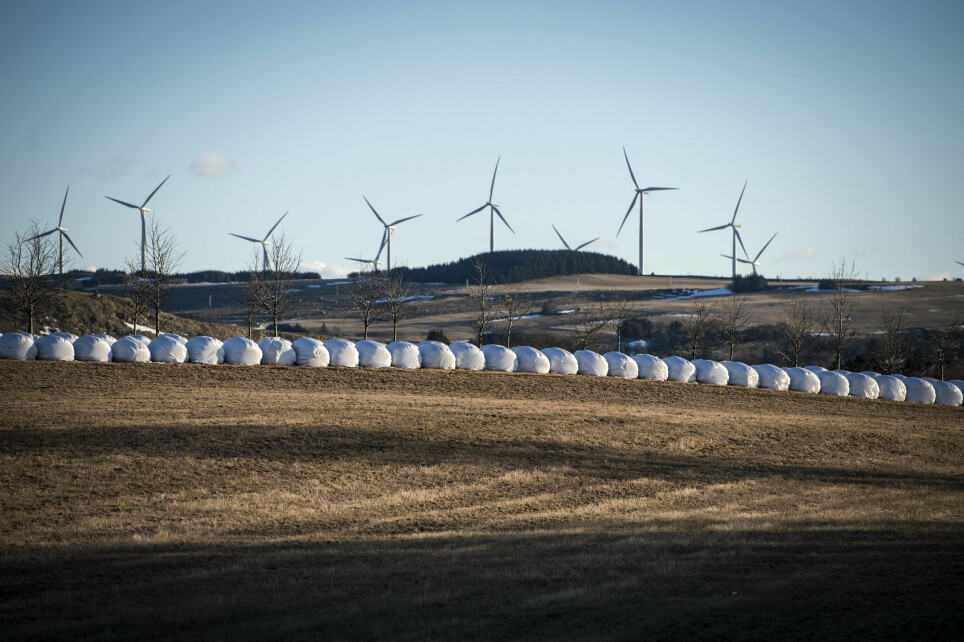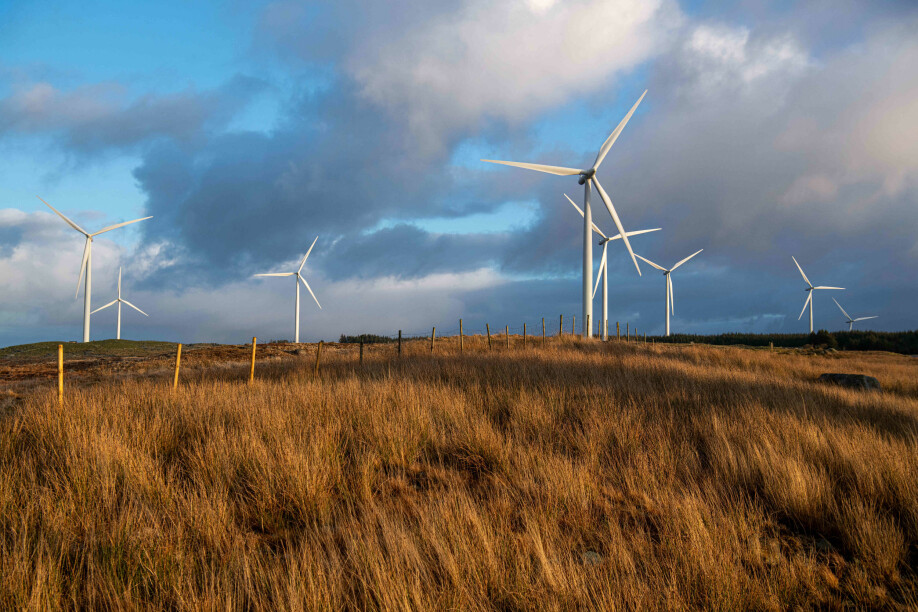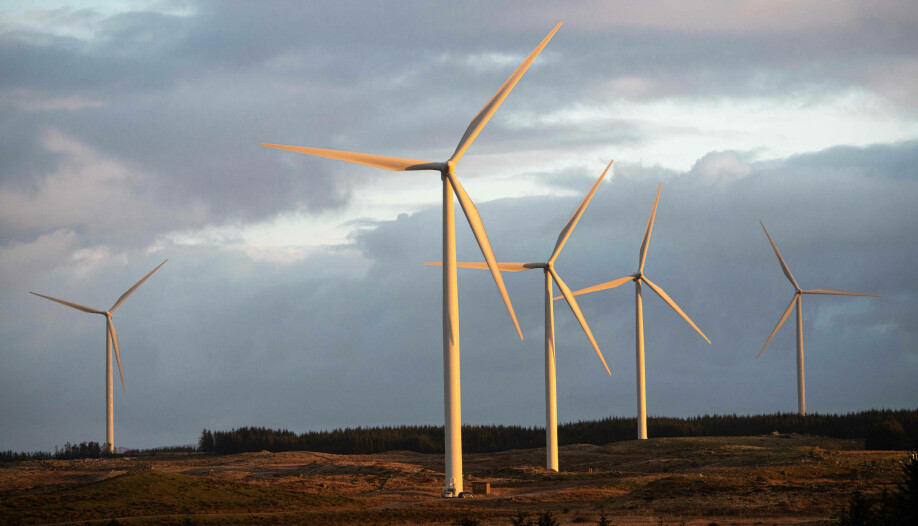THIS ARTICLE/PRESS RELEASE IS PAID FOR AND PRESENTED BY Fridtjof Nansen Institute - READ MORE

Windpower: The wind that shifted
Norway needs more renewable energy, but windpower installations are often placed in untouched natural surroundings and face considerable local opposition
The Norwegian government has recently announced an ambitious climate plan that will necessitate rapid change. In response, the business community is gearing up to electrify transport as well as industry. Such a major ‘green shift’ in Norway will require far more clean energy to be produced than today – and onshore windpower is part of that package
However, windpower installations require large, open spaces in untouched natural areas. Moreover, the people living near such installations are not particularly enthusiastic.
“Oh no, we are not finished with windpower development in Norway,” states Tor-Håkon Inderberg, Senior Researcher at the Fridtjof Nansen Institute (FNI). He feels certain of this – despite major recent controversies surrounding windpower and the fact that all onshore windpower development has now been put on hold. No applications for new windpower installations can be submitted to the Norwegian Water Resources and Energy Directorate (NVE), and pending applications will not be processed.

What happened?
Great expectations
“We began studying windpower development and the related political processes back in 2016,” explains the project leader Lars H. Gulbrandsen, FNI Research Director, Climate and Energy Research, who has been working together with Inderberg. When they started their research, public attitudes to windpower were largely positive. “Back in 2016 and 2017, many local municipalities favoured windpower development.”
In particular, small outlying communities had been led to expect massive revenue inflows through property taxes, and this brought great optimism. But the picture changed completely, in only a few years.
“The developers had indicated that new windpower construction would contribute to local value creation – but many municipalities have probably been disappointed here,” Gulbrandsen notes.
The Norwegian Parliament (Storting) has now determined that future decisions on windpower siting are to be made or approved by the local municipalities., which requires amending the Planning and Building Act of 2008.

Complaints from local residents not heeded
Developers have often contacted property owners and municipal authorities informally, even before preparing applications to the NVE
Inderberg explains: “What we found was that if the developers realised that the property owners and municipal authorities weren’t particularly interested in windpower construction, any further plans were simply dropped.” In his view, this indicates that the local communities did have a certain amount of influence in halting the process already before application were submitted to the NVE
“Moreover, we found that the NVE almost never granted a concession if the potential host community was opposed to a windpower project,” he adds.
On the other hand, Gulbrandsen notes, once a concession has been granted, the local municipalities have little say in the matter: they must usually accept what the NVE decides together with the developer.
“For instance, turbines have been built much higher than originally indicated, and the placement of turbines and access roads has been changed – but local protests have not been heeded. Things like that can help to explain why many municipalities have now shifted from ‘yes’ to ‘no’ to windpower,” Gulbrandsen adds.

Windpower turbines – whether you want them or not
In 2019, the Norwegian authorities presented the ‘National Framework for Onshore Windpower’, with 13 areas designated as possible windpower development sites.
“This led to massive outcries from municipalities all over Norway – which took the authorities totally by surprise. The framework was intended to provide predictability and help to avoid conflicts. Instead, it brought far more trouble than the politicians had expected,” Inderberg notes.
“More than 5000 inputs to the public hearings came in. Of the 56 municipalities that had delivered inputs, a full 49 were firmly opposed to windpower installations in their areas. This was an unusually massive, clear response.”
Why did the municipalities react like this?
“People living in the areas slated for possible windpower development felt they'd been given no choice – and that their voices had been totally ignored. Little had been done to ensure a solid local anchoring,” Gulbrandsen explains.
“Moreover, there were probably many who had misunderstood the framework plan, and thought that if their municipality was part of an area that might be judged suitable for windpower development, then the installations would come, sooner or later.”
An equitable ‘green shift’
Justice is important, Tor Håkon Inderberg explains.
“If we are to undertake a major ‘green’ shift in Norway, our politicians must make sure that the changes we experience in our everyday lives are fair. For instance, it can’t be right to punish those with low incomes and few possibilities more harshly than wealthier people who have better possibilities to adapt easily to daily life a new, greener society.”
“A problem of democracy has arisen in the case of windpower,” Inderberg concludes.
The NVE takes environmental concerns into consideration – but without explaining its reasons - and not enough?
The two FNI researchers have worked hard to find out how windpower developers and the NVE, as central regulatory authority, take into account the environment and nature conditions in the areas that are to have windpower installations. When a developer submits an application, it is the NVE that will decide whether permission will be granted.
“Our analyses have shown that the NVE does take the environment into consideration,” Inderberg explains.
To this, Gulbrandsen adds, “Yes, but anything else would be pretty shocking – and bad,” and continues: “Nowadays, almost all the political parties are saying that the authorities haven’t put enough emphasis on environmental issues in connection with windpower development. One problem here is that the NVE writes only a brief, fairly general justification for its decisions . And that means that its assessment of natural conditions and considerations remains opaque and unpredictable.”
What tipped the balance in connection with a negative decision? Was it a bird migration route, or a protected owl location? Was it the local visual and audio disturbances that wind turbines would cause? – or was it simply low profitability?
Gulbrandsen explains: “In Sweden, the licensing authorities prepare a detailed justification. That makes it easier to see which factors have been deemed crucial. By contrast, in Norway today, the public finds it difficult to grasp such important points, given the way the NVE formulates its decisions. The relative weight accorded to environmental values is discretionary and is not made clear in the NVE’s licensing decisions.”
More power, and more money, to the local municipalities
Hydropower has always been profitable for Norwegian municipalities. Hydropower municipalities are among the wealthiest in the country, and can often provide a higher level of services. For example, there is a clear connection between municipal funding devoted to culture ventures, and the presence of hydropower installations.
Not so with windpower, however, as Gulbrandsen explains:
“To date, local municipalities haven’t found it especially attractive to allow the development of ‘windmill parks’ . Except for a few host municipalities with really big installations, local municipalities tend to end up with relative low profits. There’s no resource rent tax or natural resource tax on windpower. Only the property tax can help to generate new revenues. In Norway, we have a resource rent tax on oil extraction and hydropower. The point is that a considerable portion of the value that is created doesn’t come from the extraction process as such – it is located in the oil underground, or in the hydropower resources in the rivers and waterfalls. We see the product as basically coming from a jointly owned good, which a company is allowed to sell. And then the resultant value will have to be taxed. Hydropower producers also pay a natural resource tax to the municipalities, calculated on the basis of how much electricity they produce.”
Gulbrandsen continues:
“But now cross-party agreement has been reached. According to the revised national budget for 2021, municipalities will receive local compensation and greater influence in the planning processes.”
“Large-scale energy facilities such as windpower installations have been exempted from municipal spatial planning since 2009. This means that the municipalities have had limited opportunities to influence the development of planning of windpower in their own areas. Now, however, the Storting has decided that future spatial planning for windpower sites will be made by the municipalities in accordance with an amended Planning and Building Act. That is the politicians’ response to the legitimacy crisis and to the growing opposition to further windpower development in Norway,” Gulbrandsen explains.
Indeed, Inderberg and Gulbrandsen have received clear feedback that their research has helped to make politicians aware of the low influence accorded to the local municipalities in connection with the planning process for windpower installations.

New energy needed
A key strategy for Norway’s green shift involves decarbonization – switching to clean sources of energy. One sector after the other is to be electrified.
But that will require new renewable power, more than is available today. Inderberg and Gulbrandsen explain that these sectors need vast amounts of energy – and in order to make a green shift, we will have to produce all that energy by clean methods.
In Norway in 2020, we consumed approximately 137 terrawatt hours (TWh) and produced 156 TWh. How much energy will wide-ranging electrification require? The NVE has calculated that electrification of transport, the continental shelf and land-based industry will increase Norwegian electricity consumption by approximately 23 TWh in 2040, above and beyond normal growth in consumption.
A far higher estimate is presented in a report issued by the power-intensive industries’ project Prosess 21: 67 TWh more energy will be needed by 2050.
Regardless, a comprehensive shift to electrification will require the production of more renewal energy, according to Inderberg and Gulbrandsen.
Today Norway has an annual net surplus of renewable energy – but that cannot continue if wide-ranging electrification of new sectors sets in.
“If Norway is to achieve its climate goals and the zero-emissions vision, we will need more renewable energy – but, as I see it, our politicians will have to set priorities among several targets,” says Gulbrandsen.
Here he is referring to the emerging debate on whether it is justifiable to use large amounts of energy on the electrification of oil platforms on the continental shelf. Equinor’s plan for electrification alone will increase annual electricity consumption by 11 TWh. That corresponds almost to the annual production from all windpower that has so far been built in Norway. Similarly, politicians will need to ask themselves whether it is right to focus on big data centres, or large-scale production of green hydrogen by electrolysis, which requires vast amounts of energy. As all production of renewable energy has consequences for our natural environment, the politicians will have to make some difficult decisions, Gulbrandsen explains.
In conclusion, Inderberg adds that onshore windpower, plus some expansion of hydropower installations, is today the most efficient way of increasing the production of renewal energy.
“But then the politicians will have to evaluate whether that is what we ought to do – and, if so, how to fine-tune the concessions system so that it can handle such decisions in the best possible way.”
Reference:
Lars H. Gulbrandsen mfl.: Is political steering gone with the wind? Administrative power and wind energy licensing practices in Norway. Energy Research & Social Science, 2021. DOI: 10.1016/j.erss.2021.101963
———
Read the Norwegian version of this article at forskning.no
See more content from Fridtjof Nansen Institute:
-
War in the Arctic? Researchers debunk three myths about the High North
-
Wind power development has varied significantly among Nordic countries
-
Fiction and reality in Russian politics
-
100 years have passed since Fridtjof Nansen received the Nobel Peace Prize. Would he have been given it today?
-
Norway has the strictest aquaculture regulations in the world. Will other countries follow suit?
-
The work of the Arctic Council put on hold because of the war in Ukraine






































